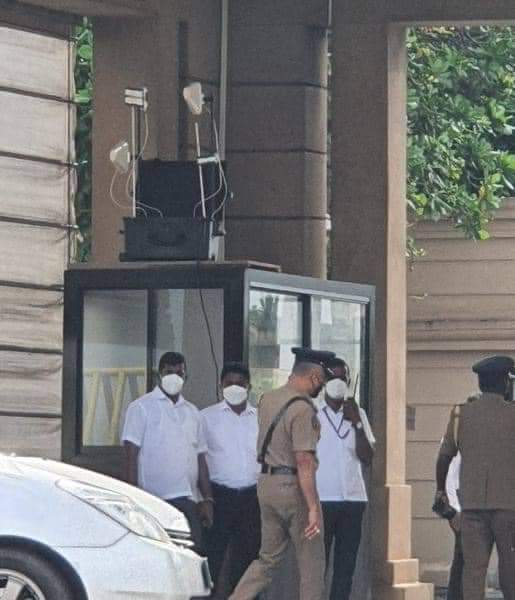It’s been a week since the country came together in protest against president Gotabaya Rajapaksa and his government. Over the course of the week, different communities would gather each day in raising their voices, including many Sri Lankans overseas. On April 8, Sri Lanka’s IT sector took to the streets and joined these efforts too.
The tech sector is one of the many industries that have been severely hindered owing to the current government’s mismanagement. As of 2021, Sri Lanka’s digital economy was estimated to be 4.37% of the country’s GDP according to ICTA, putting it at around USD 3.47 million. Additionally, the IT sector also crossed USD 1 billion in exports a few years ago. Today, sadly these companies are struggling to work let alone grow the industry, thanks in large parts to the lack of electricity and other basic essentials. As such, it was a mere matter of time until those from the tech industry took out their own placards.
But what unfolded on Friday turned out to be a teaser of what was to come over the weekend. On April 9, protesters gathered by sheer thousands at Galle Face Green, and chants of #GoHomeGota, #GoHomeRajapaksas, and everything in between has been echoing ever since.
Signal jammers at Galle Face?
Even at the time of writing, citizens have camped out overnight at the Galle Face Green after protesting all day. Though the cries for Gotabaya to step down seem to grow louder each day, the president and his administration look to be unmoved. Amidst all this, there are lingering questions over the government’s attempts at shady digital tactics to dull the voices online, and by extension, the movement itself.
Not long after the protest kicked off, some noticed what appeared to be signal jammers being set up at the Presidential Secretariat premises. Soon protesters reported mobile signal issues.

Though chances are the signal jammers in question may actually be a form of microwave links used for walkie-talkie comms in the area. Additionally, mobile data connection issues could also be attributed to signal congestion, a common occurrence when large crowds gather. However, following the Mirihana protest, active efforts to restrict telecommunication access may not be out of the equation either.
Regardless, one thing that tends to happen during these situations is that attendees may try looking for free public WiFis to hook up to the internet. This could turn out to be dangerous, particularly when it’s a large-scale anti-government protest. Why? Open WiFi ports are vulnerable and can serve as a honeypot. Your data could easily be compromised if you’re not careful. But if you’re adamant about getting through those public WiFis, use a VPN. It’s not a foolproof guarantee. But it will add a much-needed layer of protection.
The anti-protest social media campaign
Speaking of surfacing online, a few days ago, warnings of a coordinated social media campaign were up all over Facebook. The posts claimed that this social media campaign is carried out by popular Facebook pages in an effort to cause discourse on the platform and dilute the momentum of the protests against president Gotabaya. Though it took until actress Yureni Noshika’s post for the “warning” to go viral. A Twitter thread from Dr. Sanjanah Hattotuwa suggests that this may indeed be the case.
For instance, as Dr. Hattotuwa points out, on April 1 two pages “Dimuwa – දිමුවා” and “Paniya” publishes an anti-SJB meme at the same time. Coincidence? Possibly. Then on April 4, “Lella Hutan”, “Dimuwa – දිමුවා” and “Gangster Rathne” all put up posts against Hirunika Premachandra all within a matter of minutes. The next day, two similarly-themed Facebook posts go up on two different pages within a span of a minute. This time, it was about the armed bikes at the protest on April 5. The pattern continues.
Of course, this isn’t the first digital propaganda and discourse initiated in Sri Lanka. One Groundviews report from 2018 details how bots were deployed on Twitter anchored around Namal Rajapaksa’s account. Then there were also the coordinated social media messaging that centered on Digana riots and the Easter Sunday attacks that pushed discourse-inducing content to an extreme. In fact, the anti-muslim messaging that prompted the Digana riots was so much that even Facebook issued an apology two years later.
The point is, that these are tools and strategies that political parties have utilized for years to manipulate people’s general perception of things. Now, with #GoHomeGota voices growing louder both in the online space and in the real world, citizens should expect these dark campaigns to grow louder too. We recommend exercising caution, especially when engaging with posts that follow a pattern similar to what Dr. Hattotuwa has stated.
One step in a long road ahead
As for how everything else will pan out, there’s a lot of uncertainty surrounding the situation, particularly with regard to telecommunication and the digital space. The Mirihana protest already prompted a social media ban from the Rajapaksa government, albeit a failed attempt at curbing people’s efforts. But it’s an indication that the Gotabaya and his current administration are willing to try almost anything to drain the gaining momentum against the president.
So what must we, as citizens should do? We need to keep the pressure on Gotabaya and his government, both at an individual level and from an industry standpoint. Continuing to raise our collective voices is crucial, all the while keeping a watchful eye on how things transpire in the digital arena. It’s one step of many to come. But it’s a vital one.







GIPHY App Key not set. Please check settings